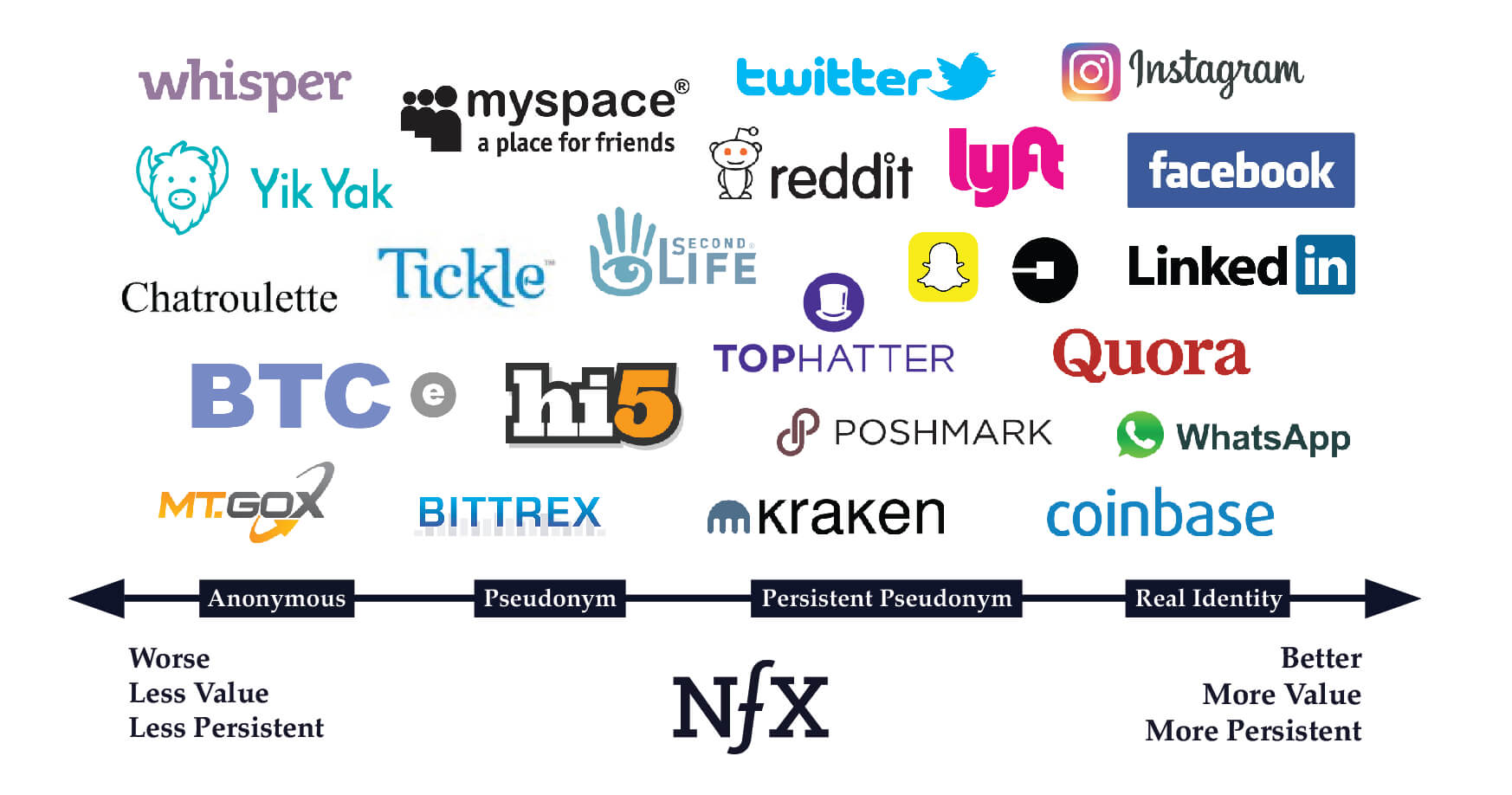
Does Real Identity Matter for Networks?
One of the key choices Founders of network businesses must make is how much to tie user profiles to real identity. More broadly called “nodes,” profiles on a network can lie anywhere on a spectrum from purposefully anonymous (e.g. Monero, ZCash, Whisper, Yik Yak) to using real-names (e.g. Facebook, LinkedIn).

Over our years investing in networks like Lyft, DoorDash, Houzz, and Poshmark, we’ve observed a very strong correlation between tying profiles to real identity and a higher probability that a network endures and becomes a valuable business — a correlation that usually goes unobserved.
<aside> ✏️ Massively important factor that games rarely take advantage of – having our product tied to real identity that is rigorously verified can give us a very significant edge.
</aside>
It’s no coincidence that the two most valuable online networks in the Western world were also the first networks to achieve stable growth with real names in their profiles — LinkedIn in 2002 for professional profiles, and Facebook in 2004 for broader social profiles.*
Using real identity in user profiles is not the easiest path when you’re starting out. Real identity requires more commitment from your users and introduces greater risk, so the barrier to activation is often higher. It’s one reason why LinkedIn grew so slowly for their first three years.
<aside> ✏️ Sure it might take more time and users will be much more reluctant to do it but we should not aim to build a large quantity of users at the expense of the quality of our userbase if we are optimizing for the creation of long-term value and defensibility.
</aside>
Once LinkedIn and Facebook got people to use their real names, however, the users became very invested over the long term in maintaining and growing their online presence and online network, much as they are invested in growing their reputation and standing in real life.
<aside> ✏️ Tying it to real identity means people take ownership of their contributions to the network and it starts to become an extension of who they are and thus much more difficult to discard and more important to maintain.
</aside>
Using real names increases user engagement which causes networks to grow in size, density, and activity — all of which builds a stronger network effect in your company. The more active and committed the nodes on the network, the more powerful the network effects.
On the other hand, networks with profiles that allow for more anonymity often grow more easily at the beginning because of the lower commitment required. Long term, however, we’ve seen them burn out and produce less value on average.
<aside> ✏️ If anything, asking for a ton from users and making sure that people fully commit their real identities to our product allows us to capture the "white-hot center" of people that are most committed to our product and therefore grow very densely as opposed to having a large userbase of people who kinda like what we're doing.
</aside>
How did Facebook get people to use their real names when people weren’t yet comfortable putting real-name profiles out in the open (unless it was a resume)? By launching in a constrained environment of perceived safety where it already made sense to show your real name: college. Working within the college niche, they built up a full head of steam even though it would be 18 months before the rest of the world was ready for a network with open, real-name social profiles.
<aside> ✏️ Being a finance product we have an "excuse" to ask for real identity, namely, KYC/AML verification. We need to get the real identities of our customers in order to be able to offer them any financial services anyways so we might as well use those real identities within the game and hit two birds with one stone.
</aside>
When Facebook finally did break out of the college niche into the mainstream, online Facebook profiles quickly became tied to personal identity and reputation in real life. For the first time, your online social media profile was anchored in your real name, which doesn’t ever change. The same thing happened later for professional identity with LinkedIn.